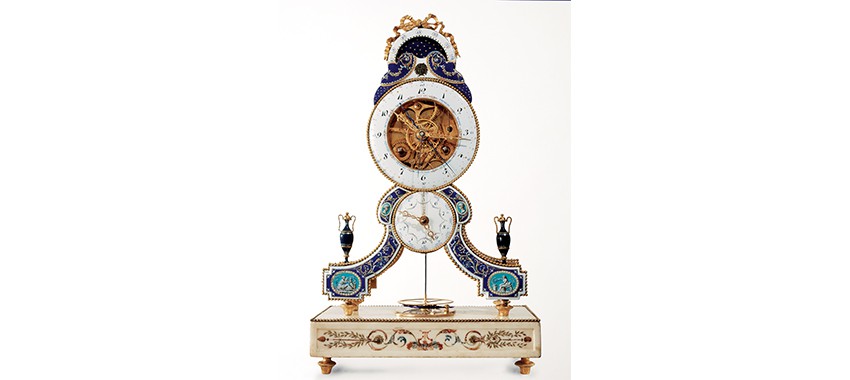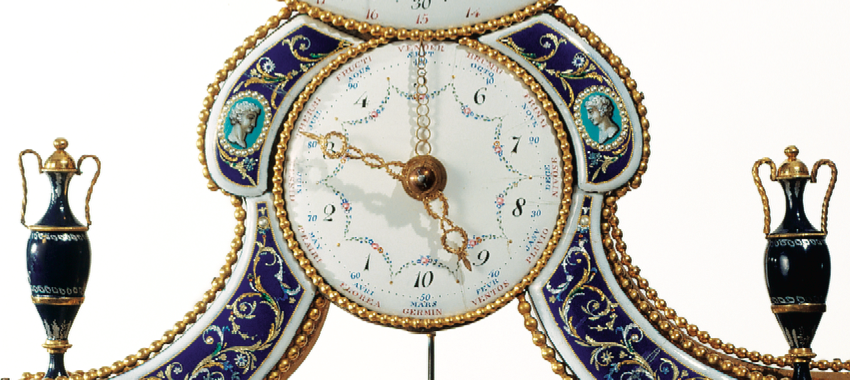Skeleton Clock
Revolutionary era
Chased gilt bronze, marble, polychrome enamels, horizontal balance wheel with a spiral spring
H. 43 ; L. 26 ; P. 14 cm
Inv. 809, donation Lapeyre
Many skeleton clocks were made during the final years of the 18th century. That here, with enamel decoration by Joseph Coteau (1740-1801), is notable for its two dials indicating the time, day, month, moon phase for the new chronometry imposed by the Republican calendar. The Convention ordered the replacement of the Gregorian system with the Republican one via a decree passed on 4 Frimaire, An II (24 Nov., 1793). Based on the decimal system, the Republican system divided the day into ten hours each of 100 minutes, the week was replaced by a Decad of ten days, three decads making a month. Beginning on 22 September, the day upon which the Republic was proclaimed and also the autumn equinox, the Republican year was made up of twelve months of thirty days, to which were added five (or six for leap-years) complementary days at the end of the year, known as “Sanculotides”, used for the Republican holidays. Though the system was apparently simple, it did not last as long as was hoped. Old habits did indeed die hard, and the technical difficulties caused by the presence of old-system timepieces caused the Convention, on 18 Germinal, An III (7 April, 1795), to suspend “indefintely” the decree related to decimal time. Since the system did not even last a year, horological objects of this sort are extremely rare. As for the Republican calendar, Napoleon I abolished it on 22 Fructidor, An XIII (9 September, 1805), to take effect from 1 January, 1806.
Photo © Fondation Napoléon – Patrice Maurin-Berthier








